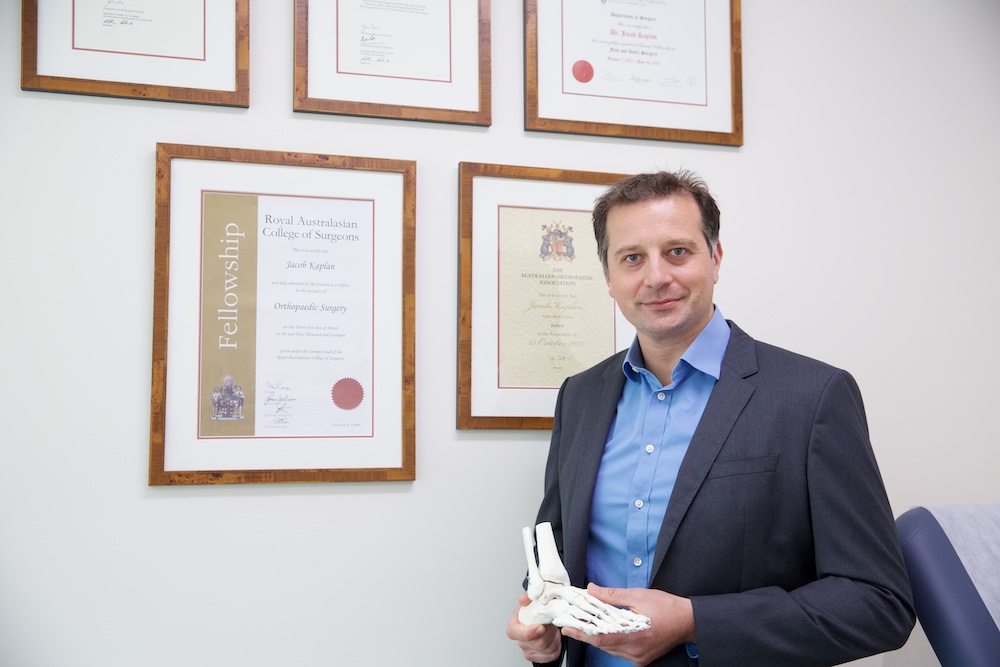Our locations:
Our locations:
- Miranda
- Bondi Junction
- Hurstville
- Sydney CBD
Your ankle is a complex hinge joint, connecting the two long tibia and fibula bones of the lower leg. As it supports a great deal of body weight, it’s susceptible to stress injuries. In America, acute ankle injuries account for around 2 million injuries a year, roughly 20% of all sports injuries.
Despite what many people think, it’s not advisable to simple ‘walk off’ an ankle injury. Even if you can still walk with minor ankle bruising or swelling, you’re most likely going to cause further damage, including dislocation or osteochondral lesions.
If you’re experiencing ankle pain or discomfort from a severe sprain, whether a severe sprain or a persistent instability, you may need ankle surgery.
There are various procedures that a surgeon can perform on a damaged ankle, including:
Fusion surgery is necessary for treating extensive damage to the ankle joint, where protective cartilage has worn away and resulted in bone-on-bone contact. A surgeon will remove the remaining cartilage before binding bone tissues together with plates, screws or pins. A natural fusion process will take place in your body, thus preventing the movement that was causing the pain.
Lateral ankle instability is the name given to the giving way of the structure when put under stress. In such a case, a surgeon can perform a ligament reconstruction, which stabilizes your ankle and ensures you can stand and walk as normal. An arthroscopic examination will determine whether the ligament can be repaired, or whether additional tissues will be required.
The fracturing of an ankle joint bone can result in excruciating pain, where the best solution is to repair the damage through surgery. If you do require surgery for a broken ankle, the surgeon will reposition broken bone fragments before securing them with plates, screws or pins. Once in place, the natural healing process can continue uninhibited.
Even the smallest of foot and ankle irregularities can cause significant damage in the future, so you should consult with your health provider over anything causing you pain or discomfort. Problems affecting the strength, agility or endurance of your ankle can be resolved with reconstructive surgery.




After the initial discomfort following surgery, you will be required to wear a cast for at least 2 weeks. During this recovery stage, it’s absolutely vital that you rest the ankle as much as possible to avoid complications.
Recovery from ankle surgery varies case by case. Most people will be able to stand and walk unassisted somewhere between 5 and 8 weeks after surgery. At this time, some find they can return to low-intensity exercise, though this depends on your individual case.
After 10 to 12 weeks, it may be possible to resume more challenging activities, providing you have followed your rehabilitation program. Don’t be disheartened if it takes closer to 6 months to fully heal, as ankle surgery recovery times will vary based on the severity of the condition and patient commitment to rehabilitation.
A surgical fee estimate will be given to the patient to ensure fully informed financial consent prior to operation.
If private care is preferred, costs vary depending on the ankle surgery type, principally the amount of work required, supplementary treatments or medication, as well as time spent at the medical care facility. You can find out more about your anticipated costs by consulting with your healthcare provider.
© 2014-2022 Knee, Foot and Ankle Surgery. All rights reserved. Made by Shtudio in 2022.